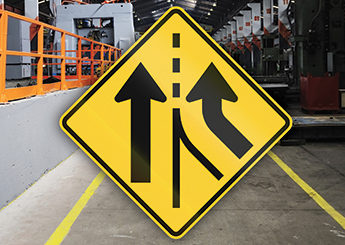Merge ahead
How can safety cultures blend after a merger or acquisition?

Key points
- No one successfully merges safety cultures overnight. One expert says the process can take up to 10 years.
- Employee surveys can help identify strengths and weaknesses in safety culture.
- Safety can serve as a “common thread” to help bond two organizations that recently have joined forces, experts say.
Additional resources
If you remember one thing about blending safety cultures after a company merger or acquisition, remember this: It takes time.
That means years. Plural.
But if your organization is patient and persistent, it can achieve success. That’s the message from safety consultants who advise organizations going through mergers and acquisitions – and the message is echoed by safety directors who are on the ground floor of such transactions.
“Part of this is realizing that you don’t change a culture overnight,” said Shawn M. Galloway, president and COO of ProAct Safety Inc. in The Woodlands, TX. “You start to change beliefs at a time and behaviors at a time and, to a degree, knowledge at a time. On average, it takes about seven to 10 years to completely change a culture.”
More and more, corporate leaders and safety professionals are learning about the challenges that emerge when two organizations come together. Change has become the only constant in business, where the next merger or acquisition to splash across headlines seemingly could affect any organization – big or small – in any industry.
In 2014, global merger and acquisition activity increased 47 percent from the previous year to $3.5 trillion, according to New York-based information firm Thomson Reuters. Meanwhile, 10 of the top 15 acquisitions involved companies based in the United States.
Money is easy to quantify. Culture is not.
However, with the right approach, organizations may actually be able to use mergers and acquisitions as a springboard to improve worker safety.
“You can blend a culture, and the importance is that safety has to be integrated with it,” said Carl Heinlein, senior safety consultant with American Contractors Insurance Group in Wexford, PA. “That’s the real, true success.
“It takes some time. It takes trust. It takes respect. It really takes ongoing, consistent communication. Make sure the message is clear, it’s enforced and it’s ongoing.”
Early hurdles
When AGL Resources and Nicor Gas merged in 2012, both organizations seemed quite similar on the surface.
AGL Resources served millions of customers as a natural gas distribution and storage company based in Atlanta. Nicor Gas provided the same services but covered different territory from its headquarters in Naperville, IL.
This was not an instance of a strong organization gobbling up a weaker one. Both were healthy financially and placed a consistent emphasis on keeping workers safe.
Yet, executives from both sides soon realized that significant differences existed when it came to establishing a strong, unified culture – including safety culture. The initial plan called for both organizations to align philosophies, policies and procedures within one year of the merger’s approval in January 2012.
“Hindsight is always 20/20,” said Jean Harrison, AGL Resources’ director of corporate safety. “There were a lot of leaders who truly believed that by the end of 2012, we would be completely standardized. That couldn’t have been further from reality.”
A deeper look showed that one company defined safety through corporate goals, while the other used safety-guiding principles. One company showed a lower OSHA recordable injury rate, while the other had a lower motor vehicle incident rate. Terminology varied between the companies. Best practices were not always shared across states, which often featured different laws and attitudes when it came to safety.
“The scope of merging safety cultures became a lot larger than we ever anticipated,” Harrison said. “Neither company was wrong. Both companies were, and still are, in full compliance. For instance, OSHA tells us what to do, but not how.
“That was one big revelation during the first year that we were one company – how different the safety policies and procedures were.”
Rather than rushing a haphazard alignment, Harrison and her colleagues adjusted the timeline. They wanted to get it right, even if that meant it would take longer.
Post a comment to this article
Safety+Health welcomes comments that promote respectful dialogue. Please stay on topic. Comments that contain personal attacks, profanity or abusive language – or those aggressively promoting products or services – will be removed. We reserve the right to determine which comments violate our comment policy. (Anonymous comments are welcome; merely skip the “name” field in the comment box. An email address is required but will not be included with your comment.)

